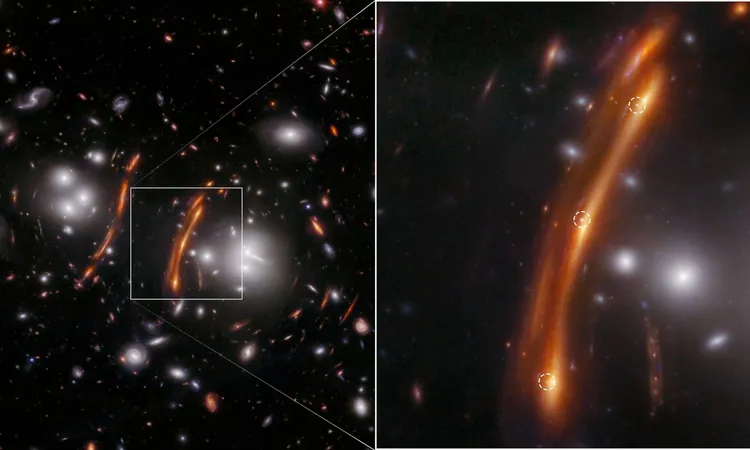
Gravitational Lens Breakthrough: The Hubble Tension Solved?
2024-10-04
Introduction
The expansion of the universe has been a well-established fact since Edwin Hubble's groundbreaking paper in 1929, which laid the groundwork for what we now refer to as the Hubble constant (H0). This essential parameter allows scientists to gauge cosmic phenomena, including the universe’s age since the Big Bang—crucial for modern cosmology.
The Hubble Constant and Its Historical Context
Historically, measuring the Hubble constant has proved a challenging task, with its value fluctuating significantly over the decades. Initial estimations were as high as 500 (km/s)/Mpc, gradually stabilizing between 50 and 90 (km/s)/Mpc by the 1960s. As observational techniques improved, the Hubble value settled around 70 (km/s)/Mpc, but discrepancies soon arose that have since been dubbed the Hubble tension.
Recent Measurements and Discrepancies
Recent measures using advanced satellites like WMAP and Planck provided high-resolution maps of the cosmic microwave background, yielding values of 67–68 (km/s)/Mpc. In contrast, distance measurements from Type Ia supernovae and the cosmic distance ladder suggested a range of 73–75 (km/s)/Mpc. This significant difference has provoked widespread speculation about the integrity of our observational methodologies or the potential existence of unknown factors, such as modifications to dark energy.
Gravitational Lensing as a Solution
Addressing the Hubble tension has led astronomers to seek independent means of calculating the Hubble constant. One promising method involves gravitational lensing—an astronomical phenomenon where massive objects like galaxies warp space, thereby bending the paths of light from more distant objects.
How Gravitational Lensing Works
When light from a distant galaxy passes near a nearer galaxy, it can create multiple distorted images of the more distant galaxy. Each image's light travels along a distinct path, allowing astronomers to observe the same cosmic event at different points in its history. This multiple-perception capability becomes particularly significant when observing supernovae, as it enables accurate distance measurements that sidestep the limitations of the cosmic distance ladder.
New Advances with the JWST
Despite previous attempts at using gravitational lensing to measure the Hubble parameter, uncertainties in their results seemed too high to effectively resolve the tension. However, a new study harnessing the observations from the James Webb Space Telescope (JWST) provides fresh hope.
The SN H0pe Supernova Case Study
This study focused on a Type Ia supernova designated SN H0pe, located in one of the most remote celestial territories ever explored. By utilizing the gravity of a less-distant galaxy cluster known as G165, researchers successfully captured three lensed images of SN H0pe. Through precise timing of these images and their observed brightness, the team calculated the Hubble constant to be between 70 and 83 (km/s)/Mpc.
Implications of the Findings
While this range still exhibits some uncertainty, it aligns closely with the findings from the cosmic distance ladder while standing in stark contrast to the lower results from cosmic microwave background measurements.
Conclusion
This groundbreaking approach might not only shed light on the ongoing debate over the Hubble tension but also revolutionize our understanding of the universe and its expansion dynamics. As astronomers continue to explore these cosmic mysteries, we may be on the brink of significant revelations that could redefine modern cosmology. Keep watching the stars; they may yet reveal their secrets!


 Brasil (PT)
Brasil (PT)
 Canada (EN)
Canada (EN)
 Chile (ES)
Chile (ES)
 España (ES)
España (ES)
 France (FR)
France (FR)
 Hong Kong (EN)
Hong Kong (EN)
 Italia (IT)
Italia (IT)
 日本 (JA)
日本 (JA)
 Magyarország (HU)
Magyarország (HU)
 Norge (NO)
Norge (NO)
 Polska (PL)
Polska (PL)
 Schweiz (DE)
Schweiz (DE)
 Singapore (EN)
Singapore (EN)
 Sverige (SV)
Sverige (SV)
 Suomi (FI)
Suomi (FI)
 Türkiye (TR)
Türkiye (TR)